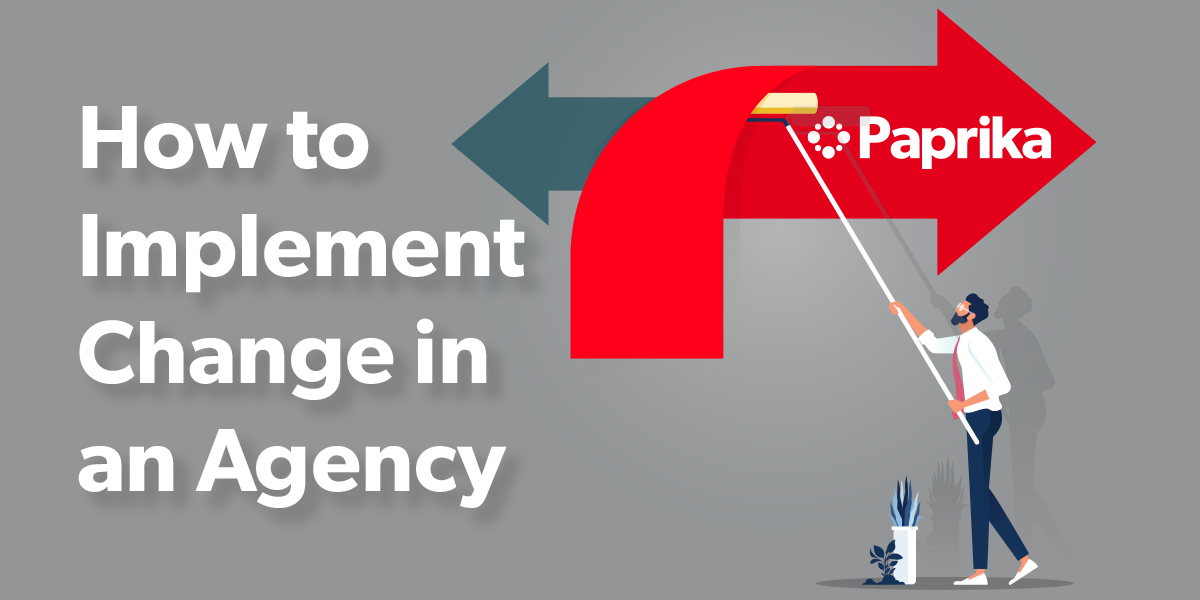

Adapting to change can be difficult, especially when it’s thrust upon you and it impacts you directly. However, change isn’t always bad. The willingness to embrace change can unlock self-improvement, lead to new opportunities, and foster potential growth.
The fear of change is hardwired into our DNA, dating back to our early ancestors. It’s an evolutionary survival trait. Making changes brings fear of the unknown. It's safer to stay close to the fire, being an integral part of the tribe brings a sense of security. Venturing into the unknown heightens our senses and brings anticipation of danger, it triggers our fight or flight response.
Yet, this same fear drove our ancestors to change circumstances, try new things, innovate, and explore. To push new boundaries and discover new possibilities, ultimately leading to our modern world, none of this would be possible without the first steps into the unknown and embrace change.
Agencies also fear change because it brings disruption, confusion, and unpredictability. Productivity drops, teams become burnt out and disgruntled clients ensue. This is why you hear sentiments like “That won’t work for us” and “We’ve always done things this way.” However, some agencies take change head-on, seeing it as an opportunity to innovate and try fresh ideas.
Change comes in many different forms can occur due to circumstances, such as a key talent leaving, a client giving notice or from external factors like pandemics. It can also stem from a desire to shake things up. The realisation that “the definition of insanity is doing the same thing over and over again but expecting different results” often prompts change. However, the desire for change and the reality of implementing it are two different things. Change doesn’t work when it comes from either the top down or the bottom up without proper integration.
The top-down approach originates from C-suite executives or upper management. They decide to implement a change or new system, this information is filtered down throughout the company. This strategic approach brings authority and quicker decision-making since relevant stakeholders are involved. However, these changes might not take hold as effectively because lower-level employees, like creatives and executives, may feel the change is imposed on them without their input or even their consideration. The changes may seem impractical or irrelevant since senior management may be far removed from day-to-day tasks that need to be delivered for clients.
The bottom-up approach involves ideas or suggestions of change coming from the team on the ground, those who handle the day-to-day work. These changes are more likely to stick since they directly impact the relevant people. However, these changes take longer to be approved by senior management, who may not agree or find them feasible. Additionally, junior team members might not be aware of the overall business impact, leading to impractical suggestions.
So, What’s the Answer?
To implement change successfully, it needs to come from all aspects of the business and have the correct change management. Here are some of the steps to ensure change sticks:
First, determine what actually needs to change. Avoid making changes just for the sake of it. Consider whether the change will streamline processes, improve efficiency, or contribute to the long-term success of the business.
If top-down and bottom-up approaches don’t work, find a middle ground. Engage with relevant stakeholders from top and bottom, early on and often. Identify all the stakeholders affected by the change and involve them in the planning process. Their buy-in is crucial for successful implementation. Ensure that those affected by the change have a voice.
Build an agency culture where nothing is off the table, an open-door policy where ideas are suggested and the “traditional” is challenged. With this ultimately brings change and a shift into new directions. However, it’s important to communicate the vision, goals, and benefits of the change clearly. Transparency helps in reducing resistance and increasing acceptance.
Expect initial resistance to change. Discuss the negatives and highlight the positives. Identify potential hurdles and blockers, gather data or evidence to support the change. This will help in gaining broader support and better insights.
Once you’ve identified what needs to change and gained stakeholder approval, create a detailed plan. Break down the change into smaller, manageable steps. Assemble a team to implement it. Pre-planning will make the implementation process smoother and allow you to anticipate and address potential problems, which reduces the risk of overwhelming the team.
Provide adequate training and resources to help employees adapt to the change. Support mechanisms, such as helpdesks or peer support groups, can ease the transition. Putting your team back in control.
Implementing change is challenging and won’t happen overnight. Expect teething problems but remain committed. Collect data to monitor the impact and effectiveness of the change and be prepared to make adjustments as needed. Flexibility is key to addressing unforeseen challenges. This is the best way to determine its success, remember to celebrate milestones.
Change doesn’t have to be scary; it should be inevitable in any dynamic agency environment. By embracing change with a structured approach and effective change management strategies, agencies can innovate, grow, and stay ahead of the competition. With proper planning, clear communication, and unwavering commitment, change can transform challenges into opportunities for success.
It can be daunting implementing a new system into an already hectic agency. It can feel like a huge upheaval and the underlying worry of the possible disruption and a drop in productivity. At Paprika we completely understand your concerns, our onboarding process is in place to reduce the apprehension and to make the transition as seamless as possible. This is achieved thorough preparation, clear communication, and team buy-in. From the initial kick-off meeting through training to go-live, Paprika’s team supports you every step of the way.
To find out more why not book a demo with one of our Paprika experts.